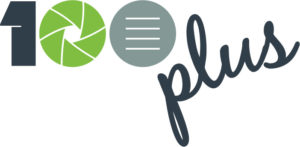The daughter of a music teacher, U.S. Rep. Suzanne Bonamici knows that the arts strengthen STEM and vice versa. “Integrating the arts into STEM education inspires more critical thinking, which we need to maintain our country’s spirit of innovation and entrepreneurship,” she says.
Bonamici co-founded the Congressional STEAM caucus to champion arts education and pinpoint opportunities to blend arts with STEM. As a representative of Oregon’s 1st Congressional District, her office currently leads the Congressional App Challenge. Rep. Bonamici answered our questions about why government, business and education should talk about the arts and engineering in the same sentence.

E100: You are currently reviewing submissions from students for the Congressional App Challenge. Can you tell us what you’re looking for in the submissions, what awards will look like, and when winning apps will be announced?
Rep. Bonamici: My office began participating in this challenge during its first year in 2014. As the founding member of the Congressional STEAM Caucus, I view the challenge as a great opportunity for students to learn new skills and participate in technology development. It requires the students to use technical knowledge, creativity and communication skills, raising awareness about the benefits of integrating arts and design into STEM education.
A panel of expert judges from NW Oregon will select the winning app. The judges will evaluate the submissions for creativity, originality, user experience and design. The winner’s app will be featured in the Capitol building and online. The winner will also receive credits for Amazon Web Services. My office accepted applications for the app competition through Nov. 1, and the winner will be announced in the following weeks.
 E100: With this coding app challenge you encouraged middle and high school students to “… use both halves of their brain to solve problems creatively.” How does adding the A to STEM strengthen the practices?
E100: With this coding app challenge you encouraged middle and high school students to “… use both halves of their brain to solve problems creatively.” How does adding the A to STEM strengthen the practices?
Rep. Bonamici: I’m a firm believer in the ability of the arts to enrich and connect people, inspire creativity, and transform communities. Plus, well-rounded education that includes the arts develops creativity as well as analytic skills. And we see students more engaged in the classroom when arts, music, and other creative outlets are included in instruction. Integrating the arts into STEM education inspires more critical thinking, which we need to maintain our country’s spirit of innovation and entrepreneurship.
E100: What inspired you to launch the Science Technology Engineering Arts and Math (STEAM) Caucus in 2013?
Rep. Bonamici: I frequently tour businesses and hear about need for collaborative problem-solvers who can come up with new ideas and communicate them — yet there was not much discussion in Congress about how to educate innovators. I formed the STEAM Caucus to highlight the importance of arts education and push back against cuts to arts programs. STEAM education also builds a more inclusive environment that supports a greater diversity of students, especially girls and students of color. We get better decisions and more insight when diverse voices are around the table. I want to make sure all students have the opportunity to benefit from an arts education, so they will be able to reach their full potential and our communities will be stronger.
E100: Commonly, STEM subjects are deemed “hard skills” while music, arts, and communications are labeled “soft.” Some people interpret those labels as “good” and “bad” or “strong” and “weak.” Do you agree with this point of view? If not, how can we help people, academia and the business sector approach learning and training in both categories concurrently, or to the benefit of the other?
Rep. Bonamici: I do not agree with that way of thinking! Our future entrepreneurs, innovators, and inventors need broad skills to solve 21st century problems — we should not limit them. The reality is that traditional STEM fields thrive with the influence of the arts. I’ve seen examples of multi-disciplinary workplaces across Northwest Oregon, including engineers who are developing state-of-the-art equipment, scientists who are experimenting with new materials, and designers and artists who are making products attractive and integrating a human element.
There is a movement at universities to encourage traditional STEM students to use problem solving, risk-taking, and creativity — which are often associated with artists — to produce innovation in math and science fields. It is critical that businesses and universities recognize the importance of integrating arts with STEM and bring these best practices to scale.
E100: Research on the mind-body connection between music and the STEM disciplines reveal interesting and useful connections. Have you personally experienced these benefits in any way?
Congresswoman Bonamici: I was raised by a wonderful mother who was both a piano teacher and an artist, so music and the arts played a strong role in my formative years. In both my personal education and in visits to schools I have seen how music engages students and expands our ability to think creatively, and I’ve also seen students understand science and be able to communicate their understanding in creative ways. I am committed to increasing resources for music programs, which will provide students with the well-rounded education they need to thrive in whichever profession they choose to pursue.
– Tia Over, The Engineering 100
